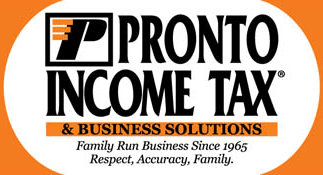2014 Tax Changes
by Andy Frye, E.A.
If you want to know about the 2014 tax changes related to the Affordable Care Act (ACA), otherwise known as ObamaCare, please visit our ObamaCare tax changes page. In an effort to avoid writing a 50 page blog post, we have separated out the ObamaCare tax changes from all the other 2014 tax changes. This page is dedicated to all the non-ACA-related 2014 tax changes.
There are more than a few 2014 tax changes and updates so let’s just get right into it:
The Extenders, Extended
Congress has gotten into the habit past few years of leaving a bunch of tax changes until the very end of the year. In the case of “The Extenders,” these last-minute tax changes are actually extensions of existing tax breaks. In other words, the changes Congress makes are to “retroactively” re-activate tax breaks that were supposed to be expired, that makes sense right?
Here is a list of tax breaks that were supposed to NOT be available for 2014, but then Congress renewed them at the end of the year, so now you CAN use these tax breaks on your 2014 tax return:
$250 above-the-line educator expenses deduction extended.
Mortgage insurance premiums given the same tax treatment as home mortgage interest, i.e. deductible
Deduction for state and local taxes on Schedule A has not been extended.
Above-the-line deduction for higher tuition expense extended.
Section 179 expense limits stay at $500,000 for 2014
American Opportunity Tax Credit.
Enhanced provisions of the Earned Income Tax Credit.
The $1,000 Child Tax Credit.
The reduced earning threshold necessary to qualify for the Additional Child Tax Credit.
The taxation of qualified dividends at long-term capital gain rates.
The Adoption Credit.
So, yeah, all those things were supposed to not be allowed on 2014 tax returns, but then they were extended and now they do.
Also worth noting, the Residential Energy Efficient Property Credit has been extended through 2106. This credit is good for 30% of the cost of certain energy-efficient property, including qualified equipment includes solar hot water heaters, solar electric equipment and wind turbines (but not windows and doors). This credit is non-refundable, and claimed on Form 5695.
- Standard Mileage Deductions
- 56 cents per mile for business miles driven (a decrease from the 56.5 cents rate for 2013).
- 14 cents per mile for charitable purposes (same as 2013).
- Mortgage Forgiveness Related to Foreclosures and Short Sales
To the great relief of taxpayers dealing with short sales or foreclosures, the Mortgage Forgiveness Debt Relief Act has been extended through December 31, 2014.
Recall that this is the law that prevented “short sales” from creating taxable income for the homeowner / borrower.
To choose a simplified example, let’s say that you have a homeowner—before this law was passed—who owed a mortgage of $500,000 and then “short sold” the property for $400,000; this homeowner, before the Mortgage Forgiveness Debt Relief Act, would (in most cases) have to pay income tax on $100,000 worth of canceled debt as if it were “income.”
The Mortgage Debt Relief Act allowed that homeowner to short sale the home without having to pay tax on the canceled debt.
(California tax preparers should keep in mind, too, that California’s tax laws are more favorable than the federal tax treatment when it comes to short sales.)
2014 Numbers to Know
The 2014 Exemption Allowance is $3,950, up from $3,900 in 2013.
The 2014 Standard Deduction Amounts are:
|
Filing Status |
Standard Deduction |
|
Joint & Qualifying Widow(er) |
$12,400* |
|
Head of Household |
$9,100* |
|
Single & Married Filing Separately |
$6,200* |
*Additional standard deduction amounts for those at least 65 and/or blind:
Joint & QW $1,200
All others $1,550
|
Dependent Standard Deduction |
|
|
Base Amount |
$1,000 |
|
Additional Amount* |
$350 |
*To calculate the standard deduction for a dependent taxpayer, you would add $350 to the earned income of the taxpayer, but not to exceed the standard deduction normally applicable to the taxpayer’s filing status.
The exemption phase-out and the itemized deduction phase-outs are in effect for 2014.
Exemption amounts phase-out by 2% for each $2,500 (or fraction thereof) by which the taxpayer’s AGI exceeds the threshold amount.
Itemized deductions are reduced by the lesser of:
|
The phase-out threshold amounts are as follows: |
|
|
Single |
$254,200 |
|
Head of Household |
$279,650 |
|
Married filing joint, surviving spouse |
$305,050 |
|
Married filing separate |
$150,000 |
Adoption Credit
The maximum Adoption Credit for 2014 is $13,190 and the credit remains a non-refundable credit.
Estate Tax
The estate tax exclusion for 2014 is $5,340,000 (double that for Married Filing Jointly couples).
Estate tax rate for 2014 = 40%.
The annual exclusion for gifts remains at $14,000, no change from 2013.
Foreign Earned Income Exclusion
The foreign earned income exclusion rises to $99,200 for 2014; taxpayers who are working abroad would file Form 2555 to claim this exclusion on their foreign earnings.
Amount of Income Subject to Social Security Tax, a.k.a. “Wage Base”
For 2014, the “wage base” for Social Security tax has been increased from $113,700 to $117,000. Beyond $117,000 of earnings, the taxpayer does not have to pay any more Social Security tax on his or her earnings. For 2014, the maximum amount of Social Security tax payable by an employee is $7,254.
Medicare Surtax for High Earners
Also started in 2013 and continuing into 2014, high income earners must pay an extra 0.9 percent Medicare “surtax” on all their earnings above those designated amounts. For example, a taxpayer who is an employee has seen his or her Medicare tax rate go from 1.45 to 2.35 percent on any income above the designated amounts which are as follows: Married Filing Jointly, $250,000; Qualifying Widow(er), Head of Household, or Single $200,000; and Married Filing Separately, $125,000). High-earning self-employed taxpayers above those “threshold amounts” are also be affected by this extra 0.9 Medicare surtax. Note that the 0.9% surtax income amounts shown above apply to gross earnings and not AGI or MAGI.
Maximum Deferred Tax Retirement Plan Contributions
The maximum deductible contribution to an Individual Retirement Account (IRA) stays at $5,500 per taxpayer for 2014, no increase from 2013, with a $1,000 “catch-up contribution” for any taxpayer age 50 or over.
The contribution limit for 401K, 403b, and other elective deferral qualified retirement plans stays at $17,500, also no change from 2013, with an additional $5,500 catch-up contribution allowed for taxpayers age 50 or over.
Tax Rates and Tax Brackets for 2014
Top marginal tax rate is 39.6%.
Top personal income tax rate is now higher (39.6%) than the top tax corporate tax rate (35%). This may cause some high-income S-corporation owners who receive “pass through” income from corporations to consider changing from an S-corporation to a regular corporation…
Here is a nice chart from our friends at Bankrate.com showing the 2014 tax brackets.
Simplified Home Office Deduction
In 2013, the IRS gave taxpayers (and tax preparers) a “Simplified Home Office Deduction” method, which avoids the need to fill out Form 8829. For many taxpayers, the Simplified Home Office Deduction results in a lower deduction amount than Form 8829, but some taxpayers can come out ahead; for instance, taxpayers with low housing costs may benefit.
Note that the taxpayer has the choice to either do it the “old way” (Form 8829) or claim the simplified deduction directly on the applicable IRS Schedule—look on bottom section of Schedule C and you will see the new lines that appear for the simplified home office deduction:
As to how to calculate the Simplified Home Office Deduction, it does live up to its name as exceedingly simple: multiply the square footage of the business use area (maximum 300 square feet) by $5. A taxpayer with a 200 square foot business use area, then, would see a 200 x $5 = $1,000 tax deduction.
Alternative Minimum Tax
Beginning in tax year 2013, the Alternative Minimum Tax exemption has been made permanent and will be adjusted for inflation each year.
The AMT exemption amounts for 2014 are:
|
Filling Status |
AMT Exemption amounts |
|
Married Joint & Qualifying Widow(er) |
$82,100.00 |
|
Single & Head of Household |
$52,800.00 |
|
Married Filing Separately |
$41,050.00 |
Earned Income Credit
In order to qualify for EIC, earned income and adjusted gross income (AGI) must each be less than:
|
Number of Qualifying Children |
|||||
|
Earned income & AGI must each be less than: |
Filing Status |
0 |
1 |
2 |
3+ |
|
Single |
$14,590 |
$38,511 |
$43,756 |
$46,997 |
|
|
Married joint |
$20,020 |
$43,941 |
$49,186 |
$52,427 |
|
Tax Year 2014 maximum Earned Income Credit:
|
Number of Qualifying Children |
||||
|
0 |
1 |
2 |
3+ |
|
|
Max EIC |
$496 |
$3,305 |
$5,460 |
$6,143 |
Investment income must be $3,350 or less for the year in order for taxpayer to qualify for EIC.
Capital Gains & Investment Tax News
The maximum long-term capital gains rate for individuals who are in the 39.6% tax bracket is now 20%.
Taxpayers who are not in the 39.6% bracket will continue to pay the zero and 15 percent long-term capital gains rates through 2014; taxpayers in the 15 percent or lower tax bracket will be eligible for the highly-advantageous zero percent rate. These beneficial rates also apply to qualified dividends.
Medicare Tax on Unearned Income
The 3.8% Medicare tax on unearned income (including rental income, dividends, capital gains, and interest income) will continue to affect higher-earning taxpayers. For Single, Qualifying Widow(er), and Head of Household filing status taxpayers, the Medicare tax on unearned income “kicks in” once the taxpayer’s Modified Adjusted Gross Income (MAGI) exceeds $200,000. For Married Filing Jointly tax returns, the 3.8% Medicare tax on unearned income begins once MAGI exceeds $250,000. These figures have not changed from 2013 as this tax is not indexed to inflation.
Government & IRS News
Social Security Administration is closing a lot of field offices and trying to take all customer service online.
Meanwhile, IRS phone wait times have continued to increase as a result of staff cuts, and callers now get through to an IRS rep only 53% of the time.
Identity theft continues to be a big problem in the tax system. The main scam being perpetrated involves criminals obtaining Social Security numbers of taxpayers and then filing tax returns early in tax season, so as to receive the taxpayer’s tax refund before the taxpayer has filed a return.
Starting in 2013 and continuing in 2014, a horrible telephone scam has been perpetrated against millions of taxpayers, particularly targeting immigrants or taxpayers with “foreign-sounding” last names. Professional thieves and bullies have been calling millions of taxpayers and impersonating IRS collections agents, including threatening to come to taxpayers’ homes and places of business and seize assets, unless taxpayers cough up money to these filthy and despicable phone-jockey thieves. This telephone scam has affected MILLIONS of taxpayers so please be careful of these yellow-bellied scumbags because they can be very convincing with their dirty scare tactics!!!
Last but least at IRS news, the IRS “Fresh Start Program” aimed at helping taxpayers who owe IRS tax debts has made it easier for taxpayers who owe to get into a payment plan with the IRS, or even settle their debts through an Offer-in-Compromise (OIC) with much more flexible OIC terms than before.
IRS Audit Areas of Focus
Continue to be careful and diligent when claiming the “real estate professional” deduction for your client’s rental property, an often-valuable deduction allows higher income taxpayers to claim larger-than-normal losses on rental property. The IRS has been auditing so-called “real estate professionals” heavily for the past three years.
The American Opportunity Credit for college tuition costs is also under a lot of IRS scrutiny.
Here is a good list of IRS audit “areas of focus” including 1099-K “matching” for business owners, increased auditing of partnership and S-corporations, and the always-popular miscategorization of employees as independent contractors.
All that being said, IRS audit rates are the lowest they’ve ever been, and that has been well-publicized in the media…almost too well-publicized, a paranoid person might think…
Immigration Reform
After years of talk but not much action, President Obama has made the decision to “go it alone” and pass an executive order that–according to reports–may legalize the status of up to 5 million people.
Immigration reform would have far-reaching implications for our tax system including millions of new tax filers.
The government will start accepting applications for this new program February 18th, so we will see soon what comes of this.
Remember if you are reading this and have a strong opinion about immigration topics that we do not do any politics, we are strictly about business, so please don’t take any of this discussion as us advocating one way or another on any of these “hot button” issues.
ITIN News
Don’t forget about the updated procedures for Individual Tax Identification Numbers (ITINs). The IRS has made the entire ITIN application much stricter. In general you have to submit original documents (no more notarized copies), and the “Acceptance Agent Program” has been modified.
Also, newly-issued ITINs will now expire after five years; note that ITIN numbers issued before January 1st, 2013 are “grandfathered in” and will not expire in five years.
Here is the link to the IRS ITIN page if you want more information about ITINs.
TIN Matching Program
Also be aware that IRS has been sending out letters to business owners who issue 1099s to people with invalid Taxpayer Identification Numbers. So far, these letters have been merely “informational,” but in this upcoming year or future years there may be more of an “enforcement element” that arises. You can read more about the IRS TIN Matching Program at this link.
No Additional Child Tax Credit for Non-Citizen, Non-Resident Dependent Children
Starting in 2013 and continuing into 2014, the IRS added an extra “questionnaire” section to the top of Form 8812 intended to prevent taxpayers from claiming the Child Tax Credit for dependent children who live in Mexico or Canada and are not U.S. citizens or residents.
Here is a link to the IRS page that explains that a child must a U.S. citizen or resident of the U.S. in order to be eligible for the Child Tax Credit; this is called “the substantial presence” test.
Note that these children may, in some cases, still qualify as dependents but would not be eligible for Child Tax Credit or Additional Child Tax Credit—in past years, IRS was not clear on this topic, but now IRS has included “substantial presence” on the actual Form 8812.
Same Sex Marriage Tax Law Updates
Speaking of “hot button” issues:
Per a 2013 Supreme Court Decision, same-sex couples cannot be prevented by the federal government from getting married. The so-called “Defense of Marriage Act” (DOMA), which defined marriage as a union between a man and a woman, was declared unconstitutional. As a result of this Supreme Court decision, states that allow—or at one point did allow—same-sex marriage have seen extensive changes in the areas of insurance and taxes.
The bottom line as far as tax law is concerned is that the IRS now grants same sex married couples the exact same rights and privileges as opposite sex married couples.
Same-sex couples who are married in a state that allows same-sex marriage now receive the following benefits:
n Ability to file jointly on federal tax returns.
n Same rules on estate tax and gift tax for same-sex married couples as for other married couples (e.g. double the exemption amounts).
n Ability to receive spousal benefit health care coverage through employers.
Tax Preparer Regulation Updates
The IRS made a huge effort over the past few years to add extra layers of tax preparer regulation, including adding a “Competency Exam” for tax preparers, a new credential for tax preparers (“Registered Tax Return Preparer“), and a 15-hours-per-year continuing education requirement for tax preparers.
These efforts at greater tax preparer regulation came about as a result of a 2009 report called the Return Preparer Review which revealed that many tax preparers were, uhm, how do we put this…not as up-to-speed as our insanely-complicated tax code requires, let’s put it that way…
Yes well that was a nice try by the IRS but on Friday, January 18, 2013, the United States District Court for the District of Columbia issued an order which prevented the Internal Revenue Service from enforcing the new regulatory requirements for registered tax return preparers.
As a result of this court decision, tax return preparers covered by this program were not required to complete competency testing or secure continuing education for 2013.
In other words, all of the new tax preparer regulations, including the “Competency Test” and the continuing education requirements, were suddenly canceled.
The IRS filed an appeal with the district court on March 29, 2013, asking for a reversal of the ruling, but these IRS efforts to reinstate tax preparer regulations proved completely unsuccessful as the IRS lost again in court.
As of May 2014, the IRS has dropped any further appeals, and the new tax preparer regulations no longer exist in any form.
Repeat:
There is no test that tax preparers must pass, the designation / credential “Registered Tax Return Preparer” is (to our knowledge) no longer in use, and there are no federal continuing education requirements for 2014 that tax preparers must complete.
Ding dong, the IRS Competency Test and IRS continuing education requirements are DEAD.
End of story.
Until this happened:
The IRS has started something called an Annual Filing Season Program whereby the IRS will “recognize” tax preparers who complete a certain amount of continuing education by including their names in an IRS database that will be publicly available to taxpayers wishing to ascertain which tax preparers have which level of education…
As you can probably tell by the length of this article, our jobs as tax professionals have become much, much more intense over the past 10 years as the complexity of the tax code has continued to skyrocket. With this being the case, it is more important than ever for YOU as a taxpayer to be informed of tax changes that may affect you. It is our hope with this article and our other educational materials that some taxpayer somewhere will be more empowered and enriched by the tax knowledge we share.
Have a beautiful day!!!



